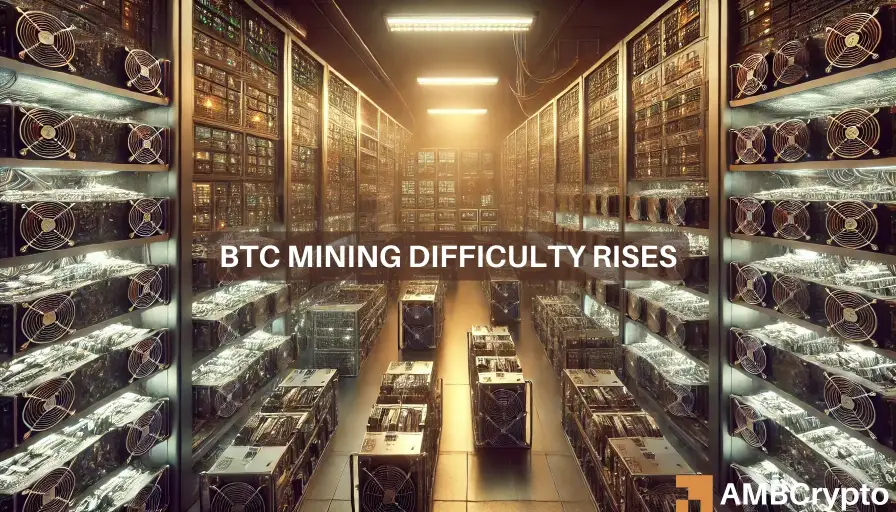The mining difficulty for Bitcoin has reached an unprecedented level due to a substantial rise in the network’s hashrate. This surge follows an upward trend in Bitcoin’s price, motivating miners to expand their operations to take advantage of potential profits.
The escalating mining difficulty not only signifies the network’s enhanced security but also poses challenges for miners as they encounter increased operational costs.
Elevated Hashrate Indicates Bitcoin Mining Complexity
Throughout the year 2024, Bitcoin’s hashrate has been steadily climbing. By mid-October, it had peaked at 656.3 billion, pointing to heightened mining activities within the network.
A higher hashrate implies a larger number of miners participating in the Bitcoin network, intensifying the competition for blocks.
The driving force behind miners’ actions is the continual surge in BTC’s price, prompting them to boost their computational capabilities.
With BTC priced at approximately $67,193, the motivation to secure new blocks has increased, triggering an automatic adjustment in the network’s mining complexity.
Record-Breaking Bitcoin Mining Complexity
Following the upsurge in hashrate, Bitcoin’s mining difficulty has reached an all-time high. The network adjusts the complexity every two weeks to maintain an average block mining time of around 10 minutes.
With more miners joining the network, competition grows, leading to increased complexity and operational costs for mining activities.
For miners, the escalating complexity implies the necessity for greater computational power and increased energy expenditures to sustain profitability. While the rising price of BTC offers potential rewards, it also heightens the expenses associated with securing those rewards, squeezing profit margins for many miners.
Increment in Miner Fees, Stable Bitcoin Price
Accompanying the surge in Bitcoin’s mining complexity and hashrate, miner fees have experienced a slight uptick. Fees typically rise during network congestion, with miners prioritizing transactions that promise higher returns.
Despite occasional spikes in miner fees caused by network congestion in 2024, block rewards remain the primary source of income for miners.
Despite these adjustments in the network, Bitcoin’s price has maintained relative stability, currently hovering around $67,193, displaying a marginal decrease of 0.28%.
The Average True Range (ATR) indicator signals potential short-term volatility, hinting at possible fluctuations in BTC’s price as the mining ecosystem adapts to the heightened complexity and network activities.
As Bitcoin’s mining complexity and hashrate continue to surge, monitoring the interconnected dynamics of miner profitability, fees, and BTC’s price will be crucial.

